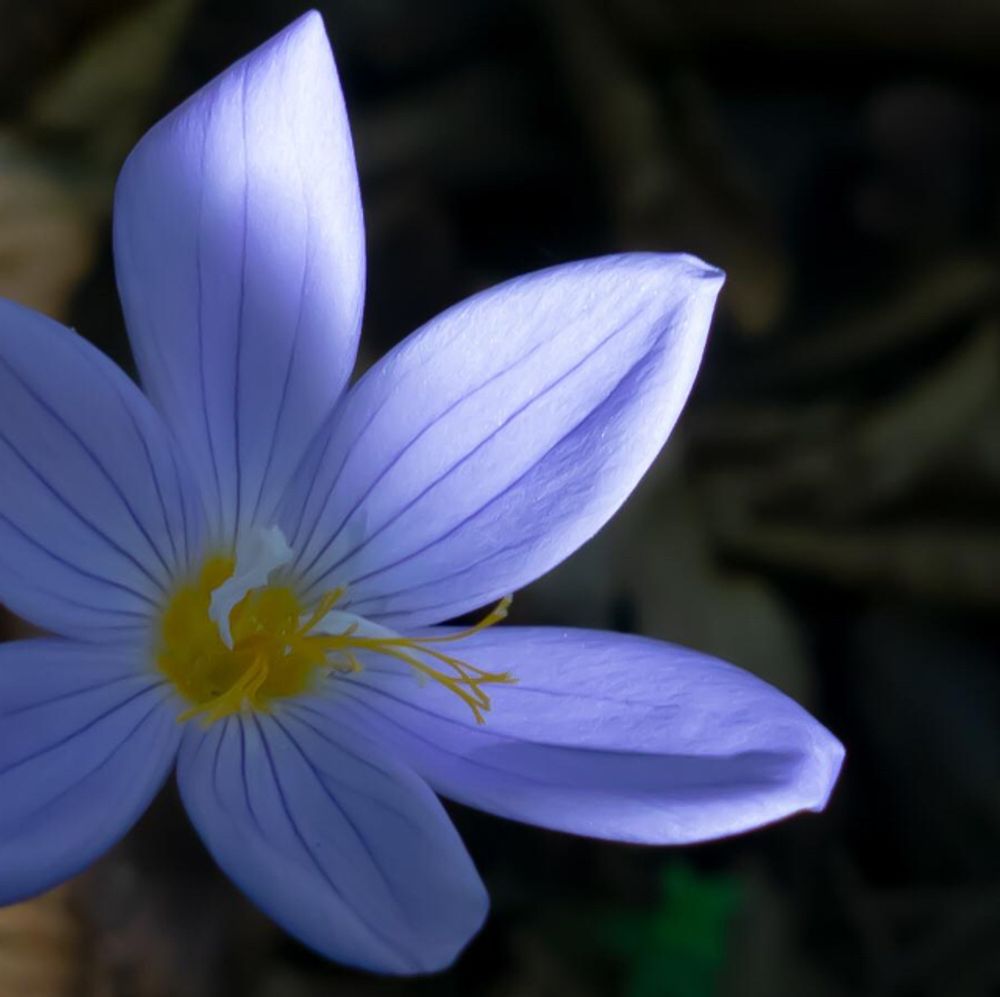Showy crocus
(Crocus speciosus)

Description
“Pet poisonous” – Toxic parts: entire plant Crocus speciosus, commonly known as the showy crocus, is a species of flowering plant belonging to the family Iridaceae. It is native to the eastern Mediterranean region, including Turkey, Syria, Lebanon, and Israel. It is a perennial herbaceous plant that is highly valued for its ornamental purposes due to its attractive violet-blue flowers that bloom in autumn. Taxonomy and Nomenclature Crocus speciosus was first described by William Herbert in 1821. The specific epithet "speciosus" is a Latin word meaning "showy" or "splendid," which is fitting for this strikingly beautiful crocus. Description Crocus speciosus typically grows to a height of 10-15 cm (4-6 inches) and produces one or two flowers per corm. The corm is the underground storage organ of the plant and is a small bulb-like structure that stores nutrients for the plant to use during the growing season. The leaves of the plant are narrow and grass-like, with a green color that fades to a pale yellow or brown as they mature. The flowers of Crocus speciosus are the main attraction of the plant. They are borne singly or in pairs on slender stems that emerge from the corms in autumn. The flowers have six petals that are fused together to form a tube-like structure with a diameter of approximately 5 cm (2 inches). The petals are a striking violet-blue color and have a distinctive silver-grey stripe down the center of each petal. The flowers have three stamens with yellow anthers and a single pistil that is positioned at the center of the flower. Distribution and Habitat Crocus speciosus is native to the eastern Mediterranean region, including Turkey, Syria, Lebanon, and Israel. It grows in a variety of habitats, including rocky hillsides, meadows, and open woodlands. It prefers well-drained soils that are rich in organic matter and can tolerate a range of soil pH levels. Cultivation Crocus speciosus is widely cultivated as an ornamental plant in gardens and parks. It is propagated by dividing the corms in late summer or early autumn, or by sowing the seeds in the autumn. The corms should be planted in a sunny or partially shaded location with well-drained soil that is kept moist during the growing season. The best time to plant the corms is in late summer or early autumn, at a depth of approximately 8 cm (3 inches) below the soil surface. Crocus speciosus is hardy to USDA zones 5-9 and can withstand cold winter temperatures. In areas with severe winters, the corms should be lifted and stored in a cool, dry place during the winter months. The plant requires regular watering during the growing season, but should be allowed to dry out completely during the dormant period. Uses Crocus speciosus is primarily used for ornamental purposes due to its attractive flowers. It is commonly planted in rock gardens, borders, and containers. The flowers are also used for cut flower arrangements and can be used to add color to indoor floral displays. In addition to its ornamental uses, Crocus speciosus has also been used for medicinal purposes. The plant contains several bioactive compounds, including crocin and safranal, which have been shown to have antioxidant, anti-inflammatory, and neuroprotective properties. The plant has been used in traditional medicine for the treatment of various ailments, including depression, anxiety, and insomnia. Conservation Status The conservation status of Crocus speciosus, also known as showy crocus, is not evaluated on the IUCN Red List of Threatened Species. This means that there is not enough information available about the species' population size, distribution, and threats to assess its conservation status. However, as a widely cultivated ornamental plant, Crocus speciosus is not considered to be at risk of extinction in the wild. Nevertheless, it is always important to practice responsible and sustainable gardening practices to protect all plant species and their ecosystems. Conclusion Crocus speciosus is a beautiful and versatile plant that is highly valued for its ornamental purposes. It is easy to cultivate and can thrive in a range of growing conditions.
Taxonomic tree:







